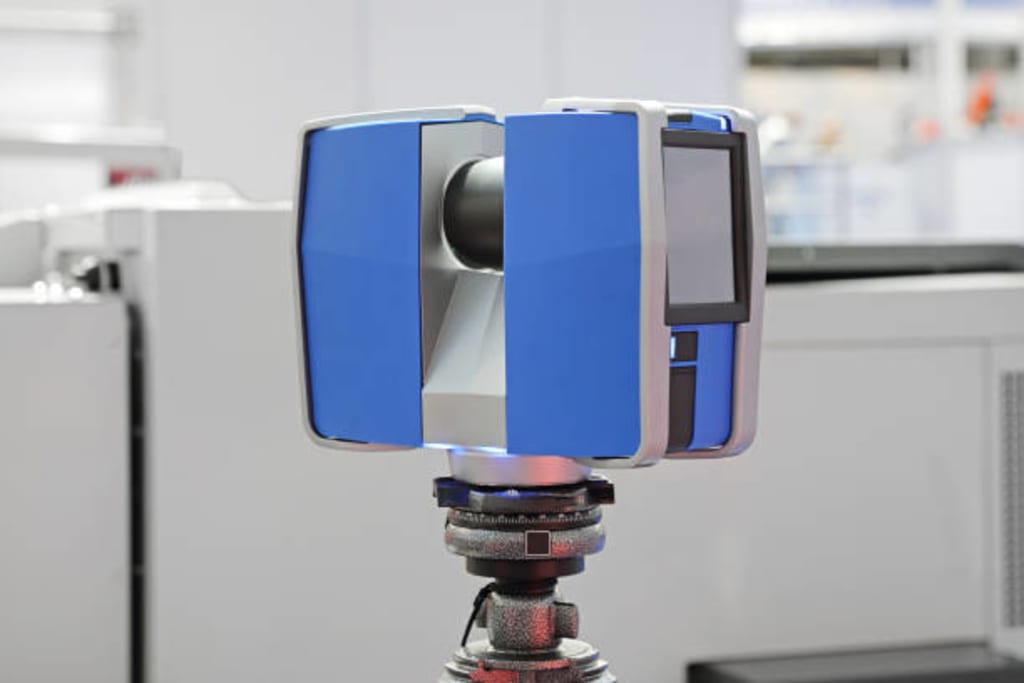Reimagining Reality: 3D Laser Scanning's Impact"
"Beyond Imagination: 3D Laser Scanning Redefines Reality"

Reimagining Reality: 3D Laser Scanning's Impact
The world we perceive is a complex tapestry of shapes, surfaces, and structures. From the towering skyscrapers that define city skylines to the intricate details of historical artifacts, our reality is defined by the objects and spaces that surround us. The process of documenting and understanding this reality has evolved significantly in recent years, thanks to the advent of 3D laser scanning. This remarkable technology has transcended traditional boundaries and is now redefining the way we interact with and understand the world around us.
Unveiling the Technology
At its core, 3D laser scanning is a method of capturing the physical world in intricate detail. It employs a laser to send out rapid pulses of light that bounce off surfaces and objects, measuring the time it takes for each pulse to return. These measurements are then compiled to create a digital representation of the environment, complete with precise geometric data.
The impact of 3D laser scanning is felt across a multitude of sectors, from architecture and engineering to archaeology and healthcare. It allows professionals to create detailed, accurate, and intricate 3D models of real-world objects and spaces with astonishing precision. This level of detail has had a profound impact on a wide range of fields.
Revolutionizing Design and Construction
In the field of architecture and construction, 3D laser scanning has become a game-changer. Architects and engineers can now scan existing structures and landscapes, producing highly accurate digital representations. These scans serve as the foundation for renovations, retrofits, and new designs. This technology has significantly improved the accuracy of measurements, leading to better project outcomes and cost savings.
Preserving Our Heritage
In archaeology and cultural preservation, 3D laser scanning has provided a powerful tool for preserving and studying historical artifacts and sites. Ancient ruins, priceless sculptures, and delicate artifacts can be digitally captured in three dimensions, allowing researchers to study and recreate them with unparalleled precision. This technology is not only preserving our history but also enhancing our understanding of it.
Enhancing Healthcare and Medicine
Within the healthcare sector, laser scanning 3D has found applications in orthopedics, prosthetics, and even patient care. It enables the creation of custom-fitted prosthetic devices, as well as the design of patient-specific surgical guides and implants. This personalization not only improves patient outcomes but also reduces healthcare costs by minimizing the need for revisions.
Elevating Crime Scene Investigation
In the realm of forensic science and crime scene investigation, 3D laser scanning has become an invaluable tool for documenting and preserving evidence. By accurately capturing crime scenes and preserving them in a digital format, investigators can revisit the scene as often as needed, reducing the risk of missing critical details and ultimately improving the quality of investigations.
Environmental Monitoring and Land Management
Environmental scientists and land managers have also benefited from 3D laser scanning. It provides them with a powerful tool to assess and monitor land use, environmental changes, and habitat conditions. By creating detailed 3D models of landscapes, scientists can better understand and respond to environmental challenges, such as deforestation, erosion, or habitat degradation.
Future Prospects
The impact of 3D laser scanning continues to expand as technology advances. The adoption of more compact and portable devices, combined with increasingly powerful software, makes 3D laser scanning more accessible than ever. This accessibility is driving innovation and creativity across multiple industries.
As the technology evolves, we can expect to see even more applications emerge, pushing the boundaries of what is possible. For example, 3D laser scanning is playing a significant role in the development of self-driving cars, as it provides vehicles with real-time, highly detailed information about their surroundings.
The impact of 3D laser scanning is profound, and its potential is virtually limitless. This technology is not just changing how we perceive and interact with the world; it's opening up new possibilities for innovation and discovery. As we continue to reimagine our reality through the lens of 3D laser scanning, we can look forward to a future where the impossible becomes achievable and the boundaries of our understanding are forever expanded.
About the Creator
Geosoft
3D Laser Scanning is a non-contact, non-destructive technology that digitally captures the shape of physical objects using a line of laser light.
https://www.geosoft-surtech.com/services/3d-laser-scanning
Enjoyed the story? Support the Creator.
Subscribe for free to receive all their stories in your feed. You could also pledge your support or give them a one-off tip, letting them know you appreciate their work.





Comments
There are no comments for this story
Be the first to respond and start the conversation.